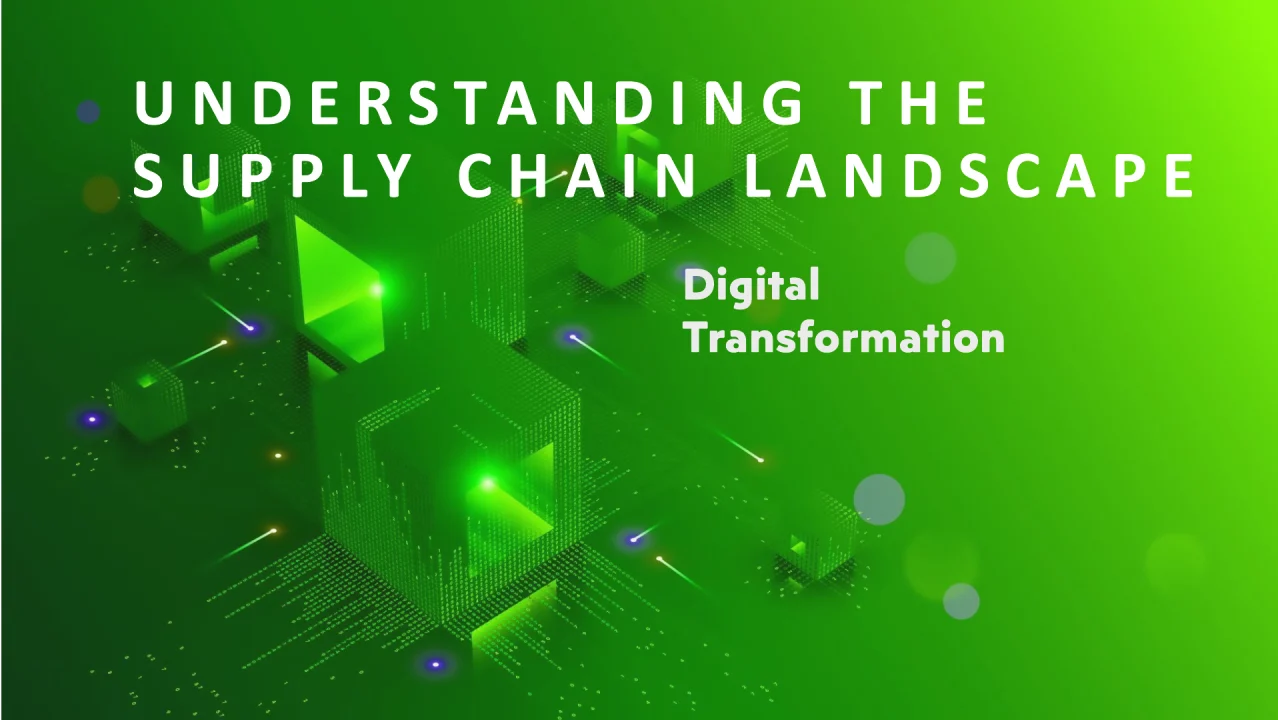Latest Posts
June 30, 2025 Tariffs: The Upside
June 30, 2025
Tariffs: The Upside
June 30, 2025
 Exploring the Role of Intrapreneurs: Innovation Drivers Within Organizations
June 30, 2025
Exploring the Role of Intrapreneurs: Innovation Drivers Within Organizations
June 30, 2025
 Mastering Productivity: A Guide to Being More Effective While Working from Home
Mastering Productivity: A Guide to Being More Effective While Working from Home
Newsletter
Sign up to receive email updates from the Freightpath.
"*" indicates required fields
Understanding the Landscape of Digital Transformation: Key Attributes, Challenges, and Enablers
June 12, 2024
In today’s interconnected and rapidly evolving global marketplace, digital transformation has emerged as a critical imperative for supply chain management. The integration of digital technologies such as Internet of Things (IoT), blockchain, artificial intelligence (AI), and data analytics is revolutionizing traditional supply chain practices, unlocking new opportunities for efficiency, visibility, and agility. However, navigating the landscape of digital transformation in supply chains entails grappling with various complexities, ranging from technological challenges to organizational barriers. This discourse explores the key attributes, challenges, and enablers associated with digital transformation in the supply chain domain, shedding light on the strategies and best practices for success.
Key Attributes of Digital Transformation in Supply Chains: Digital transformation in supply chains encompasses a holistic overhaul of processes, systems, and strategies, leveraging digital technologies to drive innovation and competitiveness. Key attributes of successful digital transformation initiatives in supply chains include:
- Connectivity and Integration: Seamless connectivity and integration across the entire supply chain ecosystem are essential for digital transformation success. This entails leveraging IoT sensors, RFID tags, and other smart devices to capture real-time data at every stage of the supply chain, from raw material sourcing to end-customer delivery.
- Visibility and Transparency: Enhanced visibility and transparency enable stakeholders to track the movement of goods, monitor inventory levels, and identify bottlenecks or disruptions in real time. Digital technologies such as blockchain provide immutable and transparent records of transactions, enhancing trust and accountability in supply chain operations.
- Predictive Insights and Analytics: Data analytics and AI-powered algorithms enable organizations to derive predictive insights from vast volumes of supply chain data, facilitating demand forecasting, inventory optimization, and predictive maintenance. By harnessing the power of data, organizations can make informed decisions and drive continuous improvement in supply chain performance.
- Agility and Responsiveness: Digital transformation empowers organizations to enhance agility and responsiveness in supply chain operations, enabling rapid adaptation to changing market dynamics, customer preferences, and supply chain disruptions. Agile supply chains leverage real-time data and analytics to anticipate and mitigate risks, ensuring continuity and resilience.
- Collaboration and Ecosystem Orchestration: Digital transformation fosters collaboration and ecosystem orchestration among supply chain partners, enabling seamless coordination and information sharing. Cloud-based platforms, collaborative tools, and supply chain networks facilitate real-time communication and collaboration, driving efficiency and innovation.
Challenges in Digital Transformation of Supply Chains: Despite the promises of digital transformation, supply chain organizations encounter various challenges along the journey. These challenges include:
- Legacy Systems and Infrastructure: Legacy systems and outdated infrastructure pose significant barriers to digital transformation, hindering the seamless integration of new technologies and processes. Overcoming legacy constraints requires investments in modernization, system interoperability, and technology upgrades.
- Data Silos and Quality Issues: Data silos and poor data quality impede the effectiveness of digital transformation initiatives, limiting visibility, and insights across the supply chain. Addressing data integration challenges and ensuring data accuracy, completeness, and consistency are essential for deriving actionable insights and driving informed decision-making.
- Cybersecurity Risks: The proliferation of digital technologies in supply chains increases the risk of cybersecurity threats such as data breaches, ransomware attacks, and supply chain disruptions. Protecting sensitive supply chain data, securing IoT devices, and implementing robust cybersecurity measures are paramount for safeguarding digital assets and maintaining trust among stakeholders.
- Talent Shortages and Skills Gap: Digital transformation requires specialized skills and expertise in areas such as data analytics, AI, and cybersecurity, which are often in short supply. Recruiting and retaining talent with the requisite digital skills, and fostering a culture of continuous learning and innovation are essential for driving digital transformation success.
- Change Management and Organizational Culture: Resistance to change, cultural inertia, and organizational silos pose significant challenges to digital transformation initiatives. Overcoming resistance requires effective change management strategies, leadership commitment, and a culture of collaboration, agility, and innovation.
Enablers of Digital Transformation in Supply Chains: To overcome the challenges associated with digital transformation, organizations can leverage various enablers and best practices. Key enablers of digital transformation in supply chains include:
- Leadership Vision and Commitment: Leadership vision and commitment are critical for driving digital transformation initiatives and fostering a culture of innovation and agility. Strong leadership provides the direction, resources, and support necessary to navigate the complexities of digital transformation and overcome organizational barriers.
- Strategic Alignment and Roadmap: Aligning digital transformation initiatives with strategic objectives and business priorities is essential for ensuring coherence and relevance. Developing a comprehensive roadmap that outlines clear goals, milestones, and performance metrics enables organizations to track progress and measure the impact of digital transformation initiatives.
- Collaboration and Partnerships: Collaboration with supply chain partners, technology providers, and industry associations facilitates knowledge sharing, resource pooling, and innovation. Building strategic partnerships and ecosystems enables organizations to access complementary capabilities, leverage economies of scale, and accelerate digital transformation efforts.
- Agile Methodologies and Iterative Approach: Adopting agile methodologies such as Scrum or Kanban enables organizations to iteratively develop and deploy digital solutions, incorporating feedback and insights from stakeholders. Agile practices promote flexibility, adaptability, and continuous improvement, aligning with the dynamic nature of digital transformation initiatives.
- Data Governance and Analytics Capabilities: Establishing robust data governance frameworks, data standards, and data management processes is essential for ensuring data quality, integrity, and security. Investing in analytics capabilities and data-driven decision-making tools enables organizations to derive actionable insights and drive continuous improvement in supply chain performance.
- Change Management and Employee Empowerment: Effective change management strategies, training programs, and communication campaigns are essential for overcoming resistance to change and fostering a culture of digital innovation. Empowering employees with the skills, tools, and autonomy to embrace digital technologies and drive change enhances organizational readiness and agility.
Digital transformation holds promises of significant benefits for supply chain organizations, enabling them to enhance efficiency, visibility, and agility in a rapidly evolving business landscape. However, navigating the complexities of digital transformation requires organizations to overcome various challenges and leverage enablers effectively. By embracing key attributes such as connectivity, visibility, and predictive insights, organizations can drive innovation and competitiveness in their supply chains. Overcoming challenges such as legacy systems, data silos, and cybersecurity risks requires leadership vision, strategic alignment, and collaborative partnerships. By adopting agile methodologies, investing in analytics capabilities, and fostering a culture of change and empowerment, organizations can navigate the supply chain landscape of digital transformation successfully and unlock new opportunities for growth and resilience.
CEO @ FreightPath Inc. | CSCMP Corporate Member | We Deploy The Industry’s Most Comprehensive Global Supply Chain Curriculum | 500+ Course Library | gofreightpath.com/course-catalog
